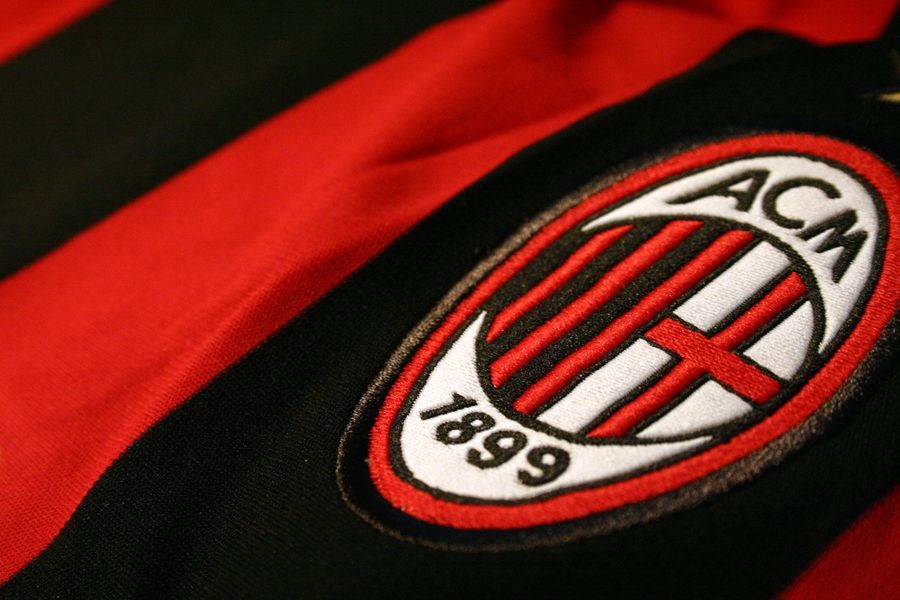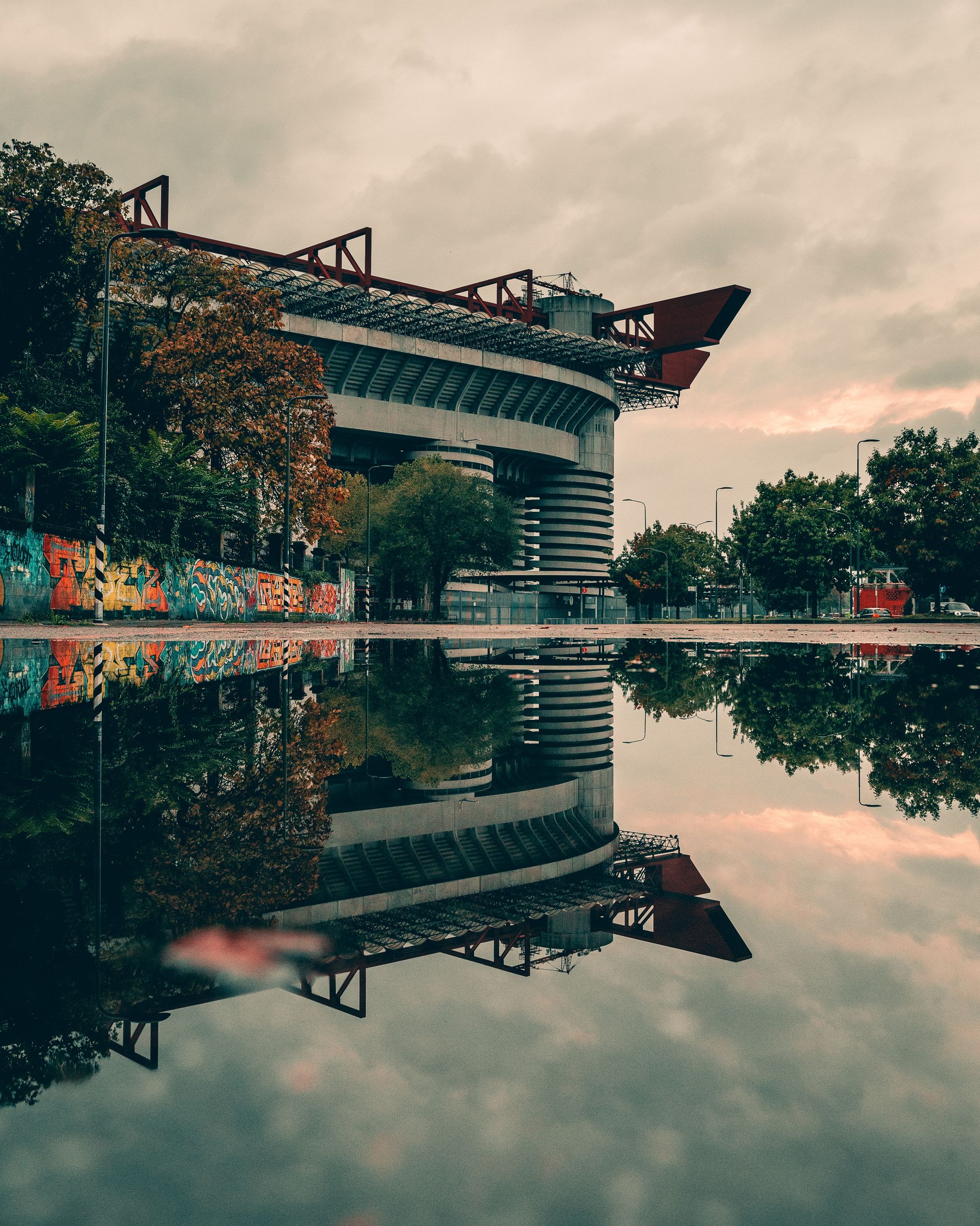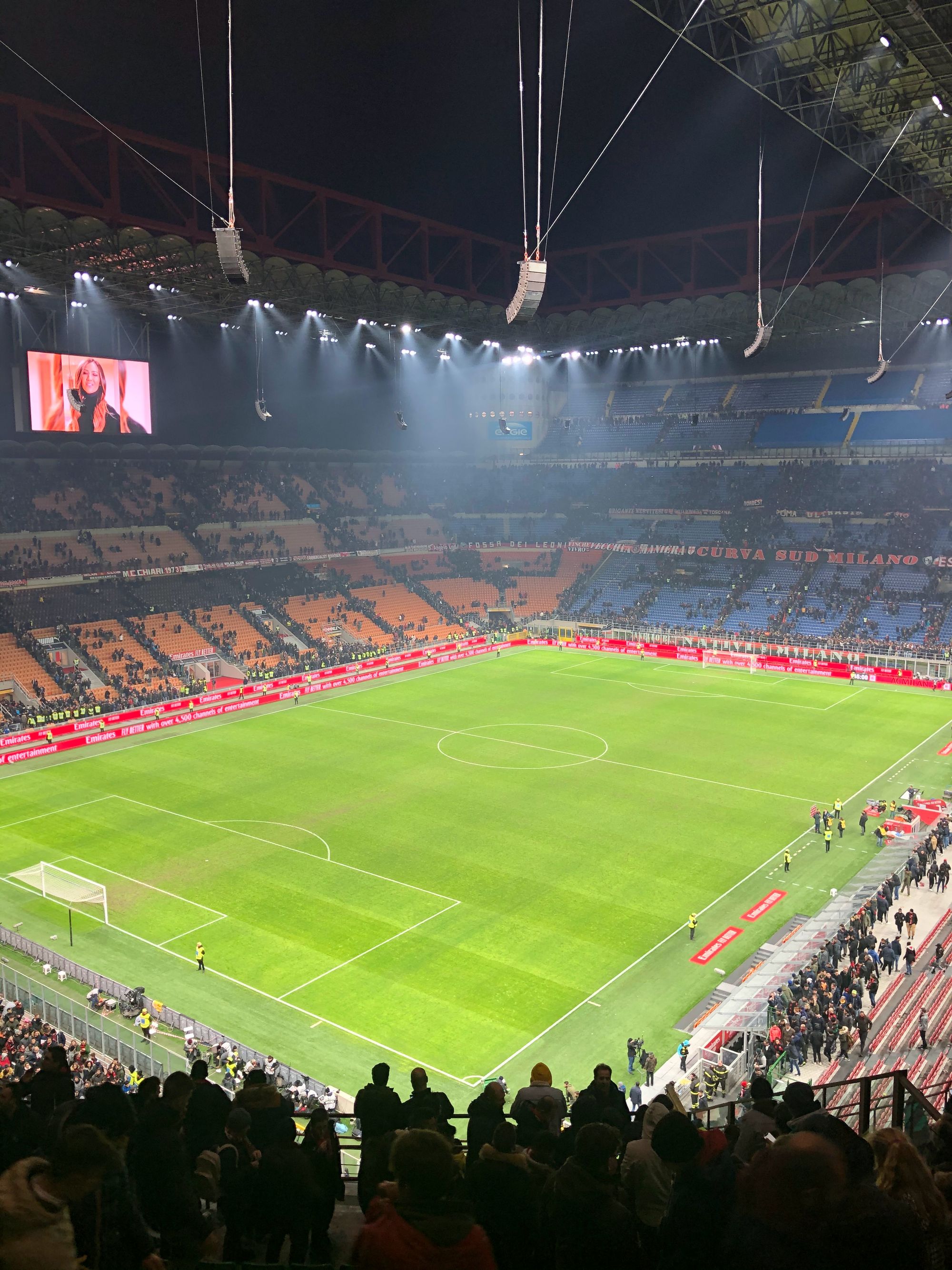AC Milan: The Legendary Italian Football Club
AC Milan, commonly known as Milan and nicknamed The Rossoneri (Italian for Red and Blacks), is an Italian professional football club based in Milan, Italy. Founded in 1899, the club has a rich history and is considered one of the most successful and iconic football clubs in the world.

I. Introduction
AC Milan, commonly known as Milan and nicknamed The Rossoneri (Italian for Red and Blacks), is an Italian professional football club based in Milan, Italy. Founded in 1899, the club has a rich history and is considered one of the most successful and iconic football clubs in the world.
AC Milan is also known for its iconic red and black striped jerseys, its passionate and dedicated fanbase, and its commitment to developing young talent through its renowned youth academy. The club has also attracted some of the world's most talented footballers over the years, including legends like Paolo Maldini, Franco Baresi, or Marco van Basten, to name just a few.
But what truly sets AC Milan apart is its unique culture and philosophy, which emphasizes teamwork, discipline, and a commitment to excellence both on and off the field. This approach has helped the club build a legacy of success that has inspired generations of football fans around the world.
II. History of AC Milan
“We will be a team of devils. Our colours will be red like fire and black to invoke fear in our opponents!” These were the words that Herbert Kilpin used as he founded AC Milan on 16 December 1899. Just a year and a half later, the Rossoneri became the champions of Italy for the first time after beating Genoa 3-0 at Ponte Carrega on 5 May 1901.
The first celebration took place at AC Milan's first headquarters, the Fiaschetteria Toscana on Via Berchet in Milan, in 1899. Words, places and dates that gave rise to the Rossoneri’s glorious history. This is a Club that has contributed hugely to the world of football, so much so that AC Milan held the most international titles recognized by FIFA from December 2007 to February 2014.
The Rossoneri’s history is now the stuff of legend, as are the men who have helped to write it – be they presidents, coaches or footballers. There have been so many historic figures, from the Englishman Alfred Edwards, under whom the Club won its first league title, and Andrea Rizzoli, the first President of AC Milan and an Italian team to win the European Cup in 1963 at Wembley, through to Silvio Berlusconi, the President who had the most success in Italy, Europe and throughout the world.
It is also possible to recognize a great club through its playing culture in particular, by the style it promotes, by the way it carries itself, by the innovative drive given to it by its leaders. It’s no coincidence that various Rossoneri victories over various eras and different decades have brought about new visions about how football should be played. And those sitting on the AC Milan bench have been key to this: the greatest coaches of Italian football have all taken charge of the Rossoneri. Gipo Viani, Nereo Rocco and Nils Liedholm paved the way for Arrigo Sacchi, Fabio Capello and Carlo Ancelotti, the latter trio inheriting incredible legacies while looking to play a modern, spectacular brand of football.
During the historic years under Berlusconi's presidency, Arrigo Sacchi was hugely successful and innovated not only thanks to great players, but also thanks to what could be considered as an extra man: the Game he played. Fabio Capello then took over, providing continuity as the winning culture continued. Under Sacchi, AC Milan won one Scudetto, two European Cups, two European Super Cups and two Intercontinental Cups, winning all the international finals they were involved in. And it was that extra man, the Game, that brought the best out of individuals and led to three Rossoneri players occupying the top three places in the Ballon d’Or in 1988 (Van Basten, Gullit and Rijkaard) and 1989 (Van Basten, Baresi and Rijkaard).
Under Capello, AC Milan were the dominant team in Italy, winning four Scudetti in five seasons. However, success wasn't just limited to what they did at home, the team also remained a force to be reckoned with in Europe. The Rossoneri made it to three consecutive Champions League finals between 1993 and 1995, with the 1994 success in Athens against Barcelona being voted as the ‘Match of the Century' by AC Milan fans in the Club’s Centenary referendum. Such was the strength of the Rossoneri with Don Fabio at the helm, the team went 58 games unbeaten between May 1991 and March 1993, while Sebastiano Rossi went 929 minutes without conceding a goal during the 1993/94 season. Furthermore, the Diavolo won three league titles between 1992 and 1994 without being given a single penalty.
Following Capello’s tenure, and after the Scudetto title won by Alberto Zaccheroni in his first season at the Club and Fatih Terim’s brief spell, the mantle was passed on to Carlo Ancelotti, with the Italian looking to emulate the success of the "Immortals" (of Arrigo Sacchi), of which he was a part, and the "Invincibles" of Fabio Capello. With King Carlo at the helm, more space had to be cleared in the Rossoneri’s trophy cabinet. In five seasons, Ancelotti won two Champions League titles, also reaching the final, semi-finals and quarter-finals in three other European campaigns.
In the 2009/10 season, Coach Ancelotti was replaced by Leonardo. He remained AC Milan Coach for a year after having spent 13 years at the Club, initially as a player, then as a director as part of AC Milan's charity Fondazione Milan and also the technical sector. After Leonardo came Massimiliano Allegri, who had a fantastic team at his disposal for the 2010/11 season thanks to Ibrahimovic, Robinho and Boateng joining the Club in August 2010 and further reinforcements being added in January 2011. Under Coach Allegri, AC Milan won their 18th Scudetto and sixth Supercoppa Italiana, the latter of which was won against Inter in August 2011 at the Bird’s Nest in Beijing. After a further two and a half seasons, during which AC Milan finished second and third in Serie A, Clarence Seedorf took over the managerial hot-seat, another man who had previously shone in the Rossoneri shirt. Under Seedorf’s guidance, AC Milan picked up 35 points over the course of the second half of the 2013-2014 season.
After previously scoring in all three of the Rossoneri’s 2007 finals against Liverpool, Sevilla and Boca Juniors, Filippo Inzaghi took charge of the First Team in 2014/15. Prior to this, he'd led the Primavera to Viareggio Cup success in February 2014. As for 2015/16, Sinisa Mihajlovic started the season in charge and guided the team to the Coppa Italia final before Cristian Brocchi was promoted from the Primavera to replace him by the end of the season.
Come 2016/17, the Club's hierarchy once again wanted to turn the page, duly appointing Vincenzo Montella as the Rossoneri's new Coach. He subsequently guided the Rossoneri to Supercoppa Italiana success against Juventus on 23 December 2016 as Milan beat Juventus on penalties in Doha. Rino Gattuso was the next man to take the reins on 27 November 2017 – already a Rossoneri icon after winning 10 trophies with AC Milan from 2002 to 2011 (five in Italy and five on the international stage). The former Rossoneri midfielder guided the club to the Coppa Italia final and also ensured qualification to the Europa League on two separate occasions.
The relationship between Gattuso and Casa Milan – which became the Rossoneri's new Headquarters at the start of the 2013/14 campaign – ended mutually in May 2019. It was then down to the sporting hierarchy, made up of Zvonimir Boban and Paolo Maldini, to choose the club’s new Coach. They decided upon Marco Giampaolo, who made his Rossoneri debut this summer during the 2019 International Champions Cup. Our league campaign then got off to a slow start, and after three consecutive defeats to Inter, Torino and Fiorentina as well as a struggle to implement his new footballing philosophy, Marco Giampaolo left the Club.
Stefano Pioli took over in his stead and did an excellent job in reforging the group and giving it a clear identity. Starting in June 2020, following the lockdown caused by the Covid-19 pandemic, the Rossoneri put together an important winning streak and managed to beat almost every opponent. The 2020/21 season was a rebirth for the Club, with the team performing extremely well in the league. AC Milan finished second on 79 points, having won 24 matches and qualified for the Champions League for the first time in seven years. The high point of 2021/22 was winning Serie A, the perfect prize for an ambitious project. First place, 86 points, 26 wins and 69 goals scored are just some of the numbers that contributed to AC Milan winning their 19th Scudetto.
III. Milan Logo
The club's history is one of tradition and evolution. The key to understand that is our emblem, which has been updated over time - but without losing its essence. The cross is the oldest part; before being used on the English flag, the red cross on a white background was born in Italy. The Republic of Genova used it as their emblem and then it was chosen to represent the Carroccio, a symbol of the Milan commune, which was opposed to the imperial forces.
Since its first appearance in 1160, the cross has been linked to Milan. The red represented nobility, the white represented the people - there was a unity between them in this emblem. Seven centuries later, this sense of unity was still alive in AC Milan fans' hearts. The Club united aristocrats and "casciavìt" (the working classes) in a shared love for the Rossoneri.
As seen in that very first badge, the Club stayed loyal to its values, beginning its history under an elegant, short-lived name: Milan Football and Cricket Club, which united football with England's other great sporting passion. The cricket was soon abandoned, but the colors, badge and spirit of community remained unequivocally. The Club is in perpetual evolution, but always respects its history - that is the balance that defines our identity.
IV. A Legendary Stadium and world known fan groups
The San Siro Stadium, officially named the Stadio Giuseppe Meazza, is a football stadium located in the San Siro district of Milan, Italy. It is the home stadium of both AC Milan and Inter Milan, and is one of the largest and most iconic stadiums in Europe.
The stadium was opened in 1926 and has a seating capacity of 75,923, making it the largest stadium in Italy. It has undergone several renovations and expansions over the years, including a major renovation in the 1990s for the 1990 FIFA World Cup. An architecturally striking solution consisting of a third level is implemented, allowing the coverage of all 85,700 seats. The stadium thus expanded was officially inaugurated on April 25, 1990, a few weeks before hosting the opening match of the world championship.

The San Siro has hosted several major international football matches and events, including the 1934 FIFA World Cup, the 1984 European Championships, and the 2001 UEFA Champions League final. It is also a regular venue for concerts and other sporting events.
The stadium has a unique design, with four separate stands that are not connected to each other, giving it a distinctive look and atmosphere. It is considered one of the most intimidating stadiums for opposing teams to play in, particularly during big matches such as the Milan derby.

In the last years, rumors about plans to construct a new stadium appeared. The new Milan stadium that would replace the historical San Siro is reported to cost 1 billion euros and work on it should begin as early as January 2024. The construction plans suggest that the new stadium would be built near the current San Siro stadium and would be named "The Cathedral". It will be able to host 60,000 people.
AC Milan ultras are the organized fan groups that support AC Milan football club. These groups are known for their passionate support and are known to create an intense atmosphere in the San Siro stadium during matches. The two largest AC Milan ultras groups are the "Fossa dei Leoni" and "Brigate Rossonere."
The Fossa dei Leoni was founded in 1968 and is considered one of the oldest and most prominent ultras groups in Italy. They are known for their use of flares and smoke bombs during matches, as well as their choreographed displays and tifos (large banners or displays).
The Brigate Rossonere was founded in 1978 and is also known for their intense support of AC Milan. They are known for their elaborate choreographed displays, which often involve large banners and pyrotechnics.
Despite their passionate support, AC Milan ultras have also been involved in incidents of hooliganism and violence in the past, leading to increased security measures in and around the San Siro stadium.
VI. Legendary players and coaches
AC Milan has had many notable players throughout its history. Here are some of the most legendary ones:
- Paolo Maldini - a true AC Milan legend who spent his entire career with the club as a defender, playing over 900 games and winning 26 trophies. There are no words to describe the football career of Paolo Maldini who made his debut as a very young boy in Udine, on 20 January 1985, with coach Nils Liedholm on the bench. A triumphal ride initiated with Arrigo Sacchi and continued with Capello. In 1997 he inherited the captain’s armband from Baresi and lifted new trophies with Zaccheroni and Ancelotti. The apotheosis came on 28 May 2003, when after 40 years from Milan’s first European Champion Clubs’ Cup win, he lifted, just like his father Cesare, the Champions League trophy at Old Trafford in Manchester.
- Franco Baresi - legendary defender who spent his entire career with AC Milan, playing over 700 games and winning 23 trophies. "He could play anywhere at the back, and what is often overlooked is his ability to carry the ball forward from defense and find the right pass." - Van Basten
- Ruud Gullit - a Dutch midfielder who played for AC Milan from 1987 to 1993, winning three Serie A titles and two European Cups. Gullit Moved from PSV Eindhoven for a then-world record fee. He would win two more league titles and two European Cups during his illustrious career in Italy. His final-third vision and intelligence quickly won him over to starting lineup, and he is rightly regarded as one of the best AC Milan legends.
- George Weah - a Liberian striker who played for AC Milan from 1995 to 2000, scoring 58 goals and winning the Ballon d'Or in 1995.
- Andriy Shevchenko - The archetype of a modern striker, Andriy Shevchenko arrived at Milanello in 1999, having won 5 league titles with Dinamo Kyiv under the guidance of his mentor Valeriy Lobanovski. The Ukrainian adjusted to Serie A incredibly quickly, winning the title of league top-scorer in his debut season with an impressive 24 goals. Deft with both feet, full of speed and power in the air, Sheva scored the unforgettable winning penalty in the 2003 Champions League final. Only Nordahl managed to score more goals for AC Milan.
- Marco van Basten - Dutch forward who played for AC Milan from 1987 to 1995, scoring 201 goals and winning three Ballon d'Or awards. Marco van Basten established himself as one of the best foreign players to grace the Italian football.
- Kaka - It’s love at first sight between Milan and the very young Kaká who arrived in 2003 after his amazing success with São Paulo. With his clean face, good feet and great sprint speed he immediately helped Milan to the win of their seventeenth league title. The Brazilian's exponential growth culminated in the extraordinary 2006/07 season, when he scored 10 goals and led the team to the Champions League final victory in Athens, after an unforgettable brace to Manchester United in the semi-final. Before receiving the Golden Ball and FIFA World Player awards in 2007, Kaká also won the European Super Cup and Club World Cup.
- Clarence Seedorf - Born in Suriname, Clarence Seedorf, thanks to his brilliant technique and extraordinary tactical intelligence, is the only player who has won the Champions league with three different clubs. As the youngest debutant for Ajax ever, he quickly made an amazing career winning the top continental club competition with the Lancers in 1995, then replicating the European success in 1998 with Real Madrid. After a spell at Inter, he moved to AC Milan in 2002. In 10 seasons with the Rossoneri, he won numerous trophies in Italy and Europe, two more Champions League titles, 2 league titles and a Club Word Cup.
- Filippo Inzaghi - Filippo Inzaghi started his football career in the youth sector of Piacenza, played for several clubs, including Leffe, Parma, Atalanta and Juventus, scoring an impressive number of goals. At the peak of his career he arrived at AC Milan. In the jersey of the Rossoneri "Superpippo" exploded scoring a plethora of goals, including a decisive brace in the Champions League final revenge in Athens, repeated at the Club World Cup against Boca Juniors. He finished his adventure with Milan as a footballer with 126 goals and 300 official appearances, along with a long series of trophies.
- Zlatan Ibrahimovic - Swedish striker who has played for AC Milan in two separate spells (2010-2012 and 2019-present), scoring over 80 goals and helping the team win the Scudetto in 2012 and then 10 years later, in 2022.
The club also had many other world class players wearing the rossoneri shirt, players like Andrea Pirlo, David Beckham, Ronaldo or Ronaldinho.
During its rich history, AC Milan has had also many notable coaches. Here to name a few:
- Nereo Rocco - Rocco is regarded as one of the greatest coaches in AC Milan's history. He coached the team for two stints, from 1961-1963 and from 1967-1973, and led them to four Serie A titles, two European Cups, and two Intercontinental Cups.
- Arrigo Sacchi - Sacchi coached AC Milan from 1987-1991 and is credited with revolutionizing Italian football. He implemented a high-pressing, attacking style of play that led the team to back-to-back European Cup titles in 1989 and 1990.
- Fabio Capello - Capello coached AC Milan in two stints, from 1991-1996 and from 1997-1998. He led the team to three Serie A titles and a Champions League trophy in 1994.
- Carlo Ancelotti - Ancelotti coached AC Milan from 2001-2009 and led the team to two Champions League titles, a Serie A title, and a Club World Cup. He is regarded as one of the most successful coaches in the club's history.
VII. Rivalries
AC Milan has two main rivalries in Italy, one with Inter Milan (or Internazionale Milano) and the other with Juventus Torino.
The rivalry with Inter Milan, known as the Milan Derby or Derby della Madonnina, is one of the most heated and historic rivalries in world football. The two teams share the San Siro Stadium and have been competing against each other since 1908. The rivalry intensified during the 1960s when both clubs were among the best in Europe. Matches between AC Milan and Inter Milan are always highly anticipated and often result in heated exchanges both on and off the field.
The rivalry with Juventus, known as the Il Derby dei Campioni (The Derby of Champions), is the most played and oldest clash still played in Italy. The first games between the two teams are recorder in 1901. The meeting between Juventus and Milan is often experienced, as the reflection of the rivalry, both in political and economic, that divides Milan and Turin, the largest cities of northwestern Italy and, together with Genoa, members of the so-called industrial triangle, the socio-economic region that had the greatest sports development in the country.
VIII. Major Accomplishments
AC Milan is one of the most successful clubs in Italian and European football history. The Rossoneri have won 49 trophies: 19 Scudetti, 5 Coppe Italia, 7 Supercoppe Italiane, 7 Champions League, 5 Supercoppe Europee, 2 Coppe delle Coppe, 3 Coppe Intercontinentali and 1 FIFA Club World Cup:
- Serie A: AC Milan has won the Italian top-flight league title 19 times, making them the joint-second most successful club in Serie A history. The Rossoneri's last trophy came on 22 May 2022, when Stefano Pioli's men won the Scudetto after a wait of 10 years. The rest of the trophies were won in 1901, 1906, 1907, 1950/51, 1954/55, 1956/57, 1958/59, 1961/62, 1967/68, 1978/79, 1987/88, 1991/92, 1992/93, 1993/94, 1995/96, 1998/99, 2003/04 and 2010/11.
- Coppa Italia: AC Milan has won the Italian Cup five times.
- Supercoppa Italiana: The Rossoneri have captured seven Supercoppe Italiane: 1988, 1992, 1994 and 2004 at San Siro, 1993 in Washington, 2011 in Pechino, 2016 in Doha.
- UEFA Champions League: The Rossoneri have won seven Champions Leagues: In 1962/63, 1968/69, 1988/89, 1989/90, 1993/94, 2002/03 and 2006/07.
- European Super Cups: The Rossoneri have won five Super Cups: in 1989 and 1994 at San Siro, 1990 in Bologna, 2003 in Monaco and 2007 in Seville.
- UEFA Cup Winners' Cup: AC Milan has won the Cup Winners' Cup twice.
- UEFA Super Cup: The club has won the Super Cup five times.
- Intercontinental Cup (FIFA Club World Cup): AC Milan has won the Intercontinental Cup four times, which was a competition between the winners of the European Champions' Cup and the South American Copa Libertadores. AC Milan have held that title on four occasions: 1969 in Buenos Aires, 1989 and 1990 in Tokyo and 2007 in Yokohama.
- Ballon d'Ors: Six players have won the accolade whilst at the Club: Gianni Rivera in 1969, Ruud Gullit in 1987, Marco van Basten in 1988, 1989 and 1992, George Weah in 1995, Andriy Shevchenko in 2004 and Ricardo Kaká in 2007.
VIII. Conclusion
AC Milan's illustrious history has cemented its position as one of the most iconic and legendary football clubs in the world. The club's success has been driven by talented players, dedicated fans, and visionary coaches, including several who are regarded as some of the greatest in the sport's history. The club has a passionate and dedicated fanbase who have become an integral part of the club's identity. AC Milan is a piece of footballing history and will continue to be celebrated and admired for years to come.

